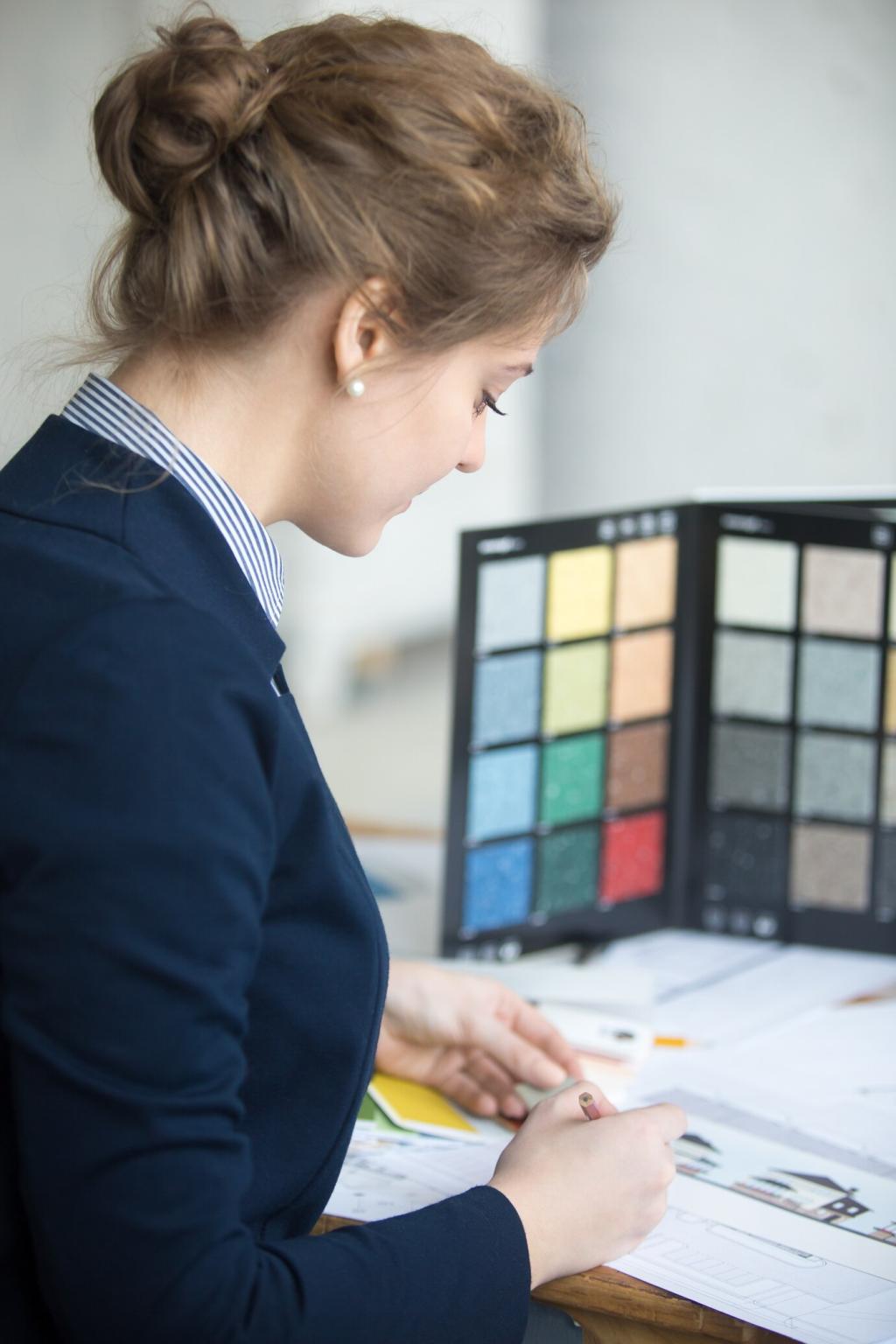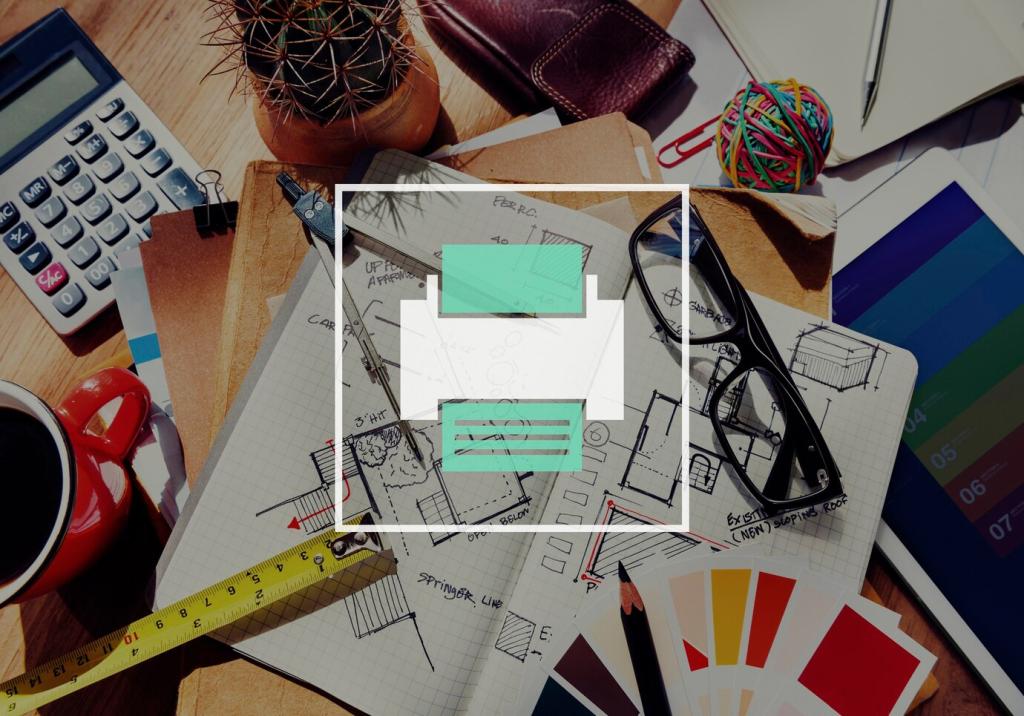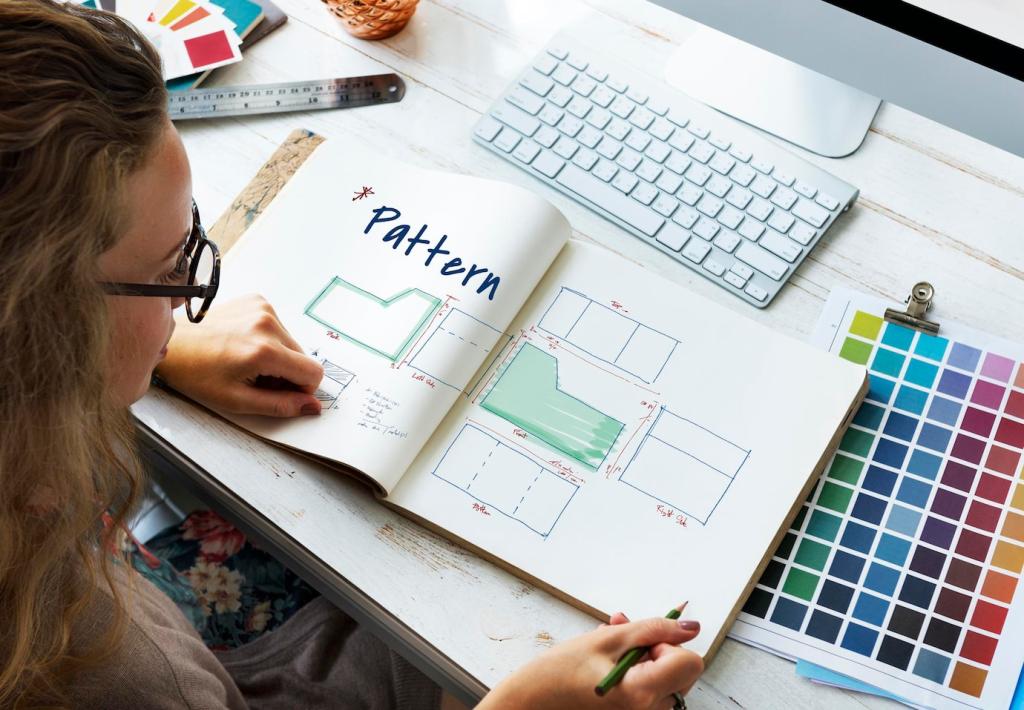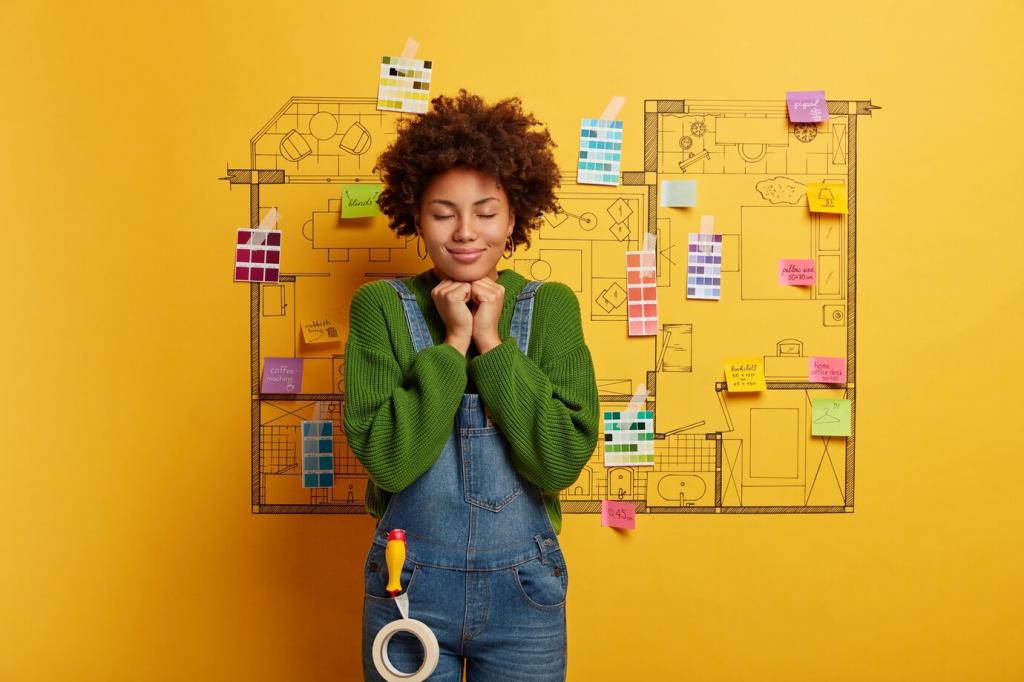Layout and Flow: Breathable Space and Ritual Zones
Create a clear floor ellipse or circle for sitting—no coffee tables, no visual obstacles. This negative space acts like a lake, reflecting light and mood. Keep the cushion slightly off-center to avoid symmetry fatigue, giving your eyes a soft horizon. Try it; notice how your shoulders drop sooner.
Layout and Flow: Breathable Space and Ritual Zones
Use the perimeter for function: a low shelf for ritual objects, a basket for blankets, a narrow peg rail for headphones or mala. Edges carry tools so the center stays free. Make each edge purposeful, then stop. Comment with one edge you redesigned and how it changed entry and exit.










